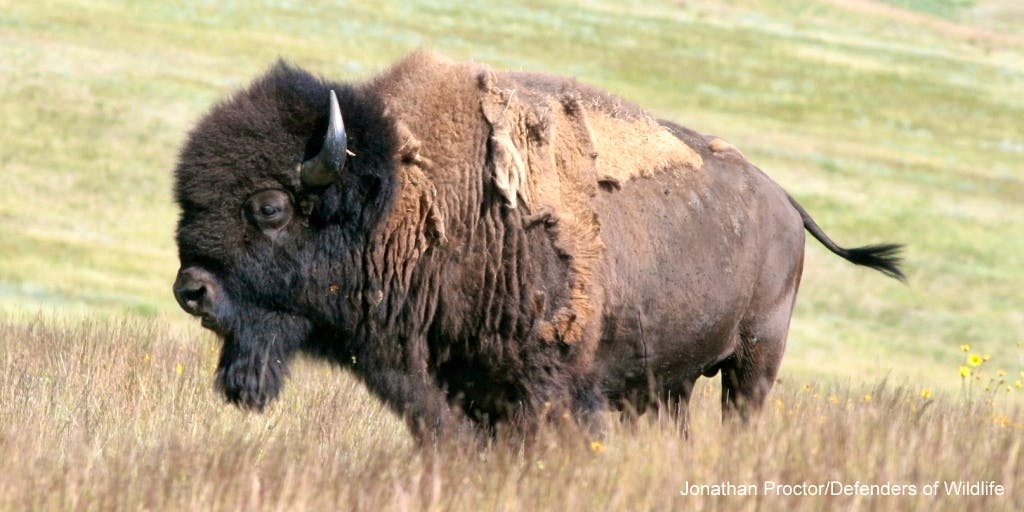The Assiniboine and Gros Ventre Tribes at Fort Belknap Indian Reservation have been waiting to restore a herd of genetically pure Yellowstone bison for more than a year. Now the wait may finally be over.
Last week the Montana Supreme Court lifted an injunction granted by a district judge in March of 2012 that prohibited the transfer of Yellowstone bison to tribal lands within Montana. The Supreme Court’s unanimous decision said that bison transfers to tribal lands were fully within the scope of Montana law. Yet the temporary ban had effectively blocked any attempts by Montana Fish, Wildlife and Parks (FWP) to restore wild bison to key parts of their native habitat on the Great Plains, including tribal lands.
The injunction was filed against FWP by wild-bison opponents the same day last spring that 61 genetically pure bison were moved from a quarantine facility near Yellowstone National Park to tribal lands at Fort Peck Indian Reservation in eastern Montana. Defenders intervened in the case on behalf of FWP, and the case was heard in April in Missoula, Mont.
Since last year, the Assiniboine and Sioux tribes at Fort Peck have successfully grown their new herd with the birth of 21 calves last spring and another 14 so far this year. But restoring wild bison to Fort Peck was only the first step. Plans have been in the works for several years to transfer about 30 of these wild bison from Fort Peck to Fort Belknap.
Tribes at both reservations hope to establish large, self-sustaining herds that will be used for cultural purposes and as a traditional source of food. Bringing back these iconic animals has also been very meaningful symbolically for the tribes, whose fate has been intertwined with wild bison for thousands of years, including the near eradication of both Native Americans and wild bison herds 130 years ago.
While there is still a long way to go before wild bison regain their proper place on Montana’s landscape, the court’s decision removes a major legal barrier to wild bison restoration across the state.
“This ruling will finally allow disease-free, native bison to return home to new areas of Montana, including tribal lands at Fort Belknap,” said Jonathan Proctor, Rockies and Plains representative for Defenders of Wildlife. “No one has worked harder to restore wild bison than Montana’s tribes who are paving the way for wildlife conservation across the state with their bold leadership.”
Tribal wildlife managers at Fort Belknap have continued preparing their land for bison by improving existing fencing around their 22,000-acre bison range where the animals will someday roam. The details of the transfer still have to be worked out between FWP and Fort Belknap’s tribal leaders, but bison could be moved as soon as this summer.
We’ll be working hard to help Fort Belknap get these native bison, and we’re already helping Fort Peck continue to expand their bison range and find ways to secure more Yellowstone bison. After that, the next step is to work with FWP and the people of Montana to identify more areas on our public lands for bison to call home.
In the meantime, let’s all take a moment to celebrate this major legal victory! With the defeat of nearly a dozen anti-bison bills in the state legislature earlier this year and now the removal of the court injunction, the future of wild bison restoration in Montana is looking much brighter.
See our full press release here, plus follow-up coverage from the Associated Press, Bozeman Daily Chronicle, Summit County Citizens Voice and an excellent editorial from the Billings Gazette.



